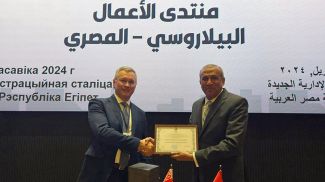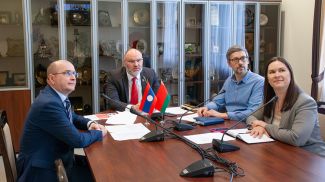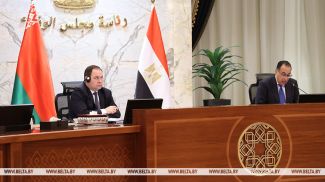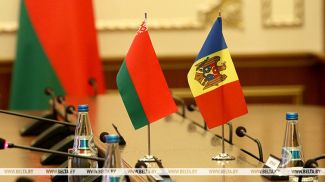MOSCOW, 25 February (BelTA) – Chairman of the Board of the Eurasian Economic Commission Mikhail Myasnikovich has formulated the main tasks the Eurasian Economic Union will have to accomplish in 2022. The official mentioned them after a session of the Eurasian Intergovernmental Council took place in Kazakhstan's capital on 25 February, BelTA has learned. Prime Minister of Belarus Roman Golovchenko took part in the session.
Mikhail Myasnikovich reminded about the address made by Kyrgyzstan President Sadyr Japarov to the Eurasian Economic Union heads of state on the occasion of Kyrgyzstan's presidency in the union's bodies in 2022. Mikhail Myasnikovich said that the Board of the Eurasian Economic Commission had worked out the relevant action plan and the necessary documents for 2022 had been signed. The president's address has been transformed into concrete practical work. “We are going to do this work to realize Kyrgyzstan's relevant initiatives and make reports to the heads of government and heads of state,” the official said.
Mikhail Myasnikovich drew attention to a certain novelty that will accompany work in the Eurasian Economic Union in 2022. “I'd single out three main areas of work. The first one is fixed-capital investments. Although investment volumes increased somewhat in 2021 in comparison with previous years, we believe it is insufficient for offering highly competitive goods on the home market and for export to third countries,” the official said. “This is why we believe it is necessary to substantially increase investments and reach at least 30% of the GDP. It is definitely necessary to increase investments by 1.5-2 times in comparison with the figures we had in the last few years. It is particularly necessary to increase investments in basic industries and in new manufacturing enterprises via manufacturing cooperation and by setting up trans-Eurasian joint economic corporations – in microelectronics, biotechnologies, and other advanced areas of business, which are classified as the fifth and sixth technological paradigms.”
Mikhail Myasnikovich mentioned digitization as the second main area of work. He said: “We are talking about digitization in a broad sense of the word. We are already working on it. A digital agenda will be put together and an integrated information system will be established. Brand new technologies. I am deeply grateful to the heads of government, who backed the relevant provisions of the report and the areas of work. It will allow us to have a more progressive information sharing system. This year we intend to increase the exploitation of current joint processes in comparison with the previous nine years. We have all the reasons to accomplish it, smooth work is in progress. Yet I'd like to point out that a lot will depend on the readiness of national segments of the integrated information system. Today I am forced to state that a number of countries are slightly lagging behind as far as accession to the common processes of the integrated information system is concerned. As for other development mechanisms, we've also reported it to the heads of government and received the relevant backing.”
Mikhail Myasnikovich mentioned the advancement of manufacturing cooperation as the third main area of work. “Undoubtedly, these three areas – fixed-capital investments, digitization, and manufacturing cooperation ties on fundamentally new principles – must produce a very serious boost to further growth,” he stressed.
Apart from that, the official added it is necessary to pay more attention to matters of social policy in the Eurasian Economic Union.
Speaking about the Eurasian Economic Union's performance in 2021, Mikhail Myasnikovich stated: “We cannot but rejoice at last year's results because the main indicator of integration is the growth of mutual manufacturing cooperation, the growth of mutual trade, which rose in 2021: by a third from 2020 and by 20 percentage points from 2019.”











